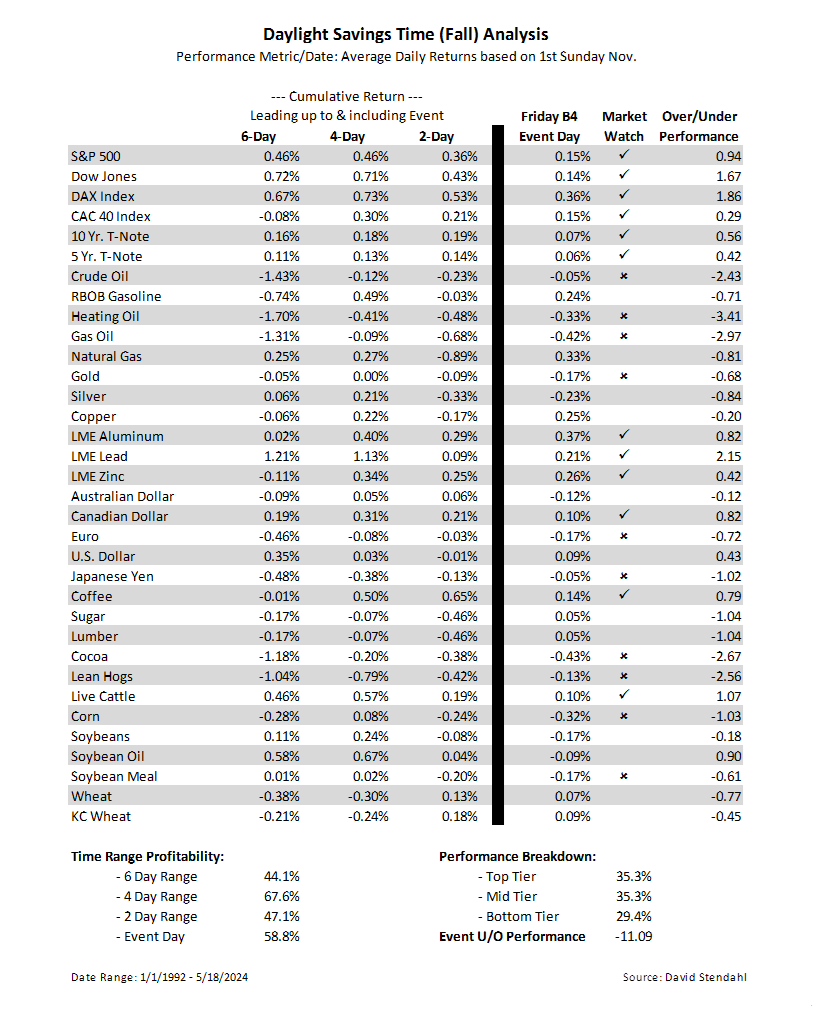Event: Fall Daylight Saving Time
The clocks turn back again to standard time on the first Sunday in November as Daylight Saving Time ends. This adjustment will mean that the sun rises later in the morning and sets later in the evening. Now Benjamin Franklin is sometimes credited with the invention of daylight saving time but we know better. The true mastermind of daylight saving time was George Vernon Hudson (1867-1946). He proposed in 1895 to the Royal Society of New Zealand to change the clocks in Spring to allow for more daylight hours during the summer months. In the Fall, the clocks would adjust back to standard time, thus ending the adjustment made in Spring. It took many years for countries around the world to adopt his semi-annual time shift idea … including New Zealand, in 1927.
To remember how daylight saving time works think Spring forward Fall back. The net result is, in the Spring we spring forward, losing an hour and in the Fall we fall back, gaining an hour.
The questions is … are the markets positively or negatively influenced leading up to fall daylight saving time?
Market Comparision
How do the markets perform leading up to Fall Daylight Saving Time? The analysis table below breaks down each of the 30+ markets into four separate trading periods. These time frames span 6-days, 4-day, 2-days and the event day itself. The return performance for each time frame is measured against its normal performance during the year to calculate a final over or underperformance return. This metric quantifies, in percentage points, the advantages or disadvantages associated with Fall Daylight Saving Time. Markets highlighted with a checkmark or an “x” should be closely monitored for potential strength or weakness heading into the event.

Calendar Breakdown by Events
All trading involves risk. Leveraged trading has large potential rewards, but also large potential risk. You must be aware of the risks and be willing to accept them in order to invest in the futures and options markets. Don’t trade with money you can’t afford to lose. This is neither a solicitation nor an offer to Buy/Sell futures or options. No representation is being made that any account will or is likely to achieve profits or losses similar to those discussed. The past performance of any trading system or methodology is not necessarily indicative of future results.
Our strategies have not been developed based on knowledge of or with reference to your particular circumstances, such as financial position, goals, risk-reward preferences, tax situation, brokerage arrangement, investment or trading experience, and so forth. Hence no content or model published here constitutes a recommendation that any particular security, portfolio of securities, transaction, or investment strategy is suitable for any specific person. You alone are solely responsible for determining whether any investment, security or strategy, or any other product or service, is appropriate or suitable for you based on your investment objectives and personal financial situation. More
